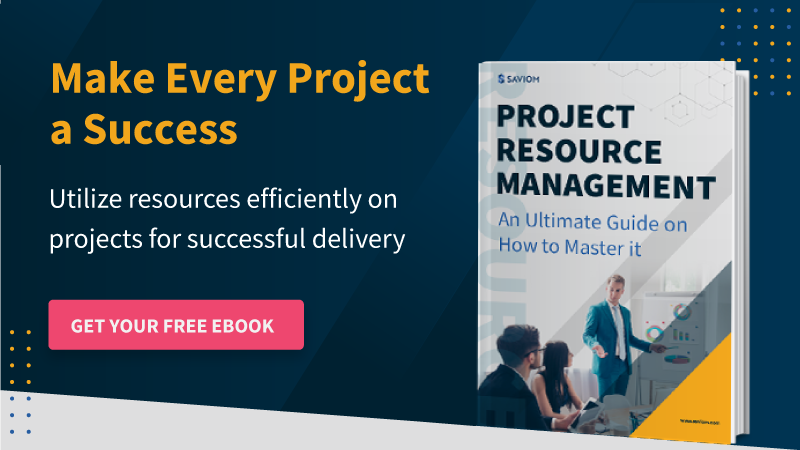Every successful project starts with a strong foundation, where each step is carefully planned, assessed, and validated from the beginning. The project initiation phase is the crucial first step that determines the direction and framework for the entire project. During initiation, project managers define the project’s core objectives, align stakeholders, evaluate resource requirements, and establish a clear scope.
When executed correctly, the initiation phase provides a clear roadmap to seamlessly execute the project and deliver the intended outcomes on time and within budget. Moreover, it enables project managers to avoid costly pitfalls, ensure smooth delivery, and foster a sense of shared ownership among everyone involved.
This blog explains the project initiation process and its significance in detail.
Let’s get started!
What is Project Initiation?
Project initiation is the first step of a project lifecycle. During the initiation phase, managers are responsible for creating a compelling business case that justifies the project’s existence. This document outlines the problem or opportunity the project addresses, along with its expected benefits and costs.
Additionally, stakeholders are identified, and a project charter is developed to formally authorize the project. Moreover, in the initiation phase, crucial decisions are made, such as selecting project sponsors, determining resource requirements, and defining success criteria. This way, project initiation lays the groundwork for successful execution and delivery.
Who Gets Involved in the Project Initiation Process?
Below are the key members who take part in the project initiation process.
• Project Sponsor
Project sponsors are senior executives who provide overall direction and financial support for the project. They play a critical role in approving the business case and resolving high-level challenges. As the primary advocate, the sponsor ensures that the project aligns with strategic objectives and delivers tangible business value.
• Project Stakeholders
Project stakeholders encompass all individuals or groups directly or indirectly affected by the project and its outcomes, including internal senior officials, customers, business leaders, and external partners. Their involvement is vital for defining project objectives, uncovering potential risks, and setting clear success criteria.
• Project Manager
Project managers are responsible for overseeing the entire project lifecycle, from initiation to conclusion. They develop the business case and project charter, define goals, identify key deliverables, and coordinate with relevant stakeholders. Additionally, the manager assesses risks, determines resource requirements, and establishes the groundwork for efficient project execution.
• Subject Matter Experts
Subject matter experts are specialists who provide knowledge and insights during project initiation. They contribute their technical expertise to conduct feasibility assessments and make realistic estimations for timelines and resource needs. SMEs help validate the project scope and ensure that proposed solutions are practical and achievable, laying a solid foundation for project planning and execution.
Now, let’s delve into the importance of the project initiation phase.
Why is the Project Initiation Phase Important?
The project initiation phase helps clarify the project objectives from the start and ensures that it aligns with the overarching organizational goals. During this stage, project managers identify and involve key stakeholders, including sponsors, team members, and external partners, to gather input and establish a shared understanding of the project’s purpose.
Thus, it helps them gain crucial buy-in early on and start the project on time. Moreover, early stakeholder involvement helps project managers secure essential financial and human resources beforehand and prevent costly roadblocks down the road. As a result, it helps minimize costs and maximize the project’s ROI.
Moreover, with an early feasibility analysis, managers can conclude whether the project is worthwhile or not. It helps them understand the project constraints and proactively work toward addressing them. This way, they can minimize the risk of delays and drive the project to success.
Lastly, the initiation phase sets up clear expectations and the purpose of what the project intends to achieve. So, it helps all involved parties to stay aligned and collaborate effectively to reach the end goal.
Read More: How to Write an Effective Project Proposal in 7 Steps?
Let’s understand the critical differences between project initiation and project planning.
Project Initiation vs. Project Planning: A Quick Comparison
Project initiation marks the beginning of a project, during which the project’s objectives, scope, and expected deliverables are clearly outlined. This phase sets the foundation for the entire project. Following initiation, the project planning phase takes place, where a detailed roadmap is created to guide the project’s execution, outlining specific tasks, timelines, and resource allocation.
In the table below, we have highlighted the key differences between project initiation and project planning.
| Aspect | Project Initiation | Project planning |
|---|---|---|
| Purpose | To define the project’s objectives, scope, and deliverables. | To create a detailed roadmap that outlines tasks, timelines, and resources for successful execution. |
| Primary Focus | Establishing the need for the project and gaining approval to proceed. | Detailing how the project will be executed, managed, and completed. |
| Key Documents | Project Charter, Business Case, Stakeholder Analysis. | Project Plan, Work Breakdown Structure (WBS), Gantt Chart, Resource Allocation Plan. |
| Activities | Identifying stakeholders, defining goals, determining feasibility, securing project approval. | Creating detailed schedules, assigning resources, estimating costs, and developing risk management plans. |
| Timeline | Occurs at the beginning of the project, before detailed planning. | Follows the initiation phase and involves detailed planning for the entire project lifecycle. |
| Outcome | A clear understanding of the project’s purpose, objectives, and approval to move forward. | A comprehensive plan that guides the execution, monitoring, and control phases of the project. |
| Stakeholder Involvement | Involves high-level stakeholders to secure initial approval and alignment on the project’s value and goals. | Involves both high-level and team stakeholders to plan detailed aspects of project execution, tasks, and resources. |
| Scope | Defines the project’s broad scope and what is within and outside the project’s boundaries. | Focuses on detailed planning within the pre-defined scope, budget, and timeframe. |
Now that we have understood the difference between project initiation and planning, let’s explore the components included in the project initiation process.
Read More: What is a Project Plan & How to Create an Effective One?
What Should Be Included in a Project Initiation Document (PID)?
Below are the components that are included in a project initiation document.
Project Brief
A project brief is a concise document that outlines the project’s scope and purpose. It provides a clear description of what the project aims to achieve, the deliverables, and the expected outcomes. The project brief serves as a foundational reference for stakeholders, guiding the project’s direction and ensuring that all parties understand the key objectives and boundaries.
Business Case
A business case is a detailed document that justifies the need for a project, outlining the reasons it should be pursued. It includes an analysis of potential benefits, costs, risks, and the overall impact on the organization. The business case serves as a decision-making tool, helping stakeholders assess the project’s feasibility and value before committing resources.
Read More: How to Develop the Business Case for a New Initiative?
Project Charter
The project charter is a formal, high-level document that officially authorizes a project. It defines the project’s objectives, scope, stakeholders, and key deliverables. The charter serves as a guiding document throughout the project’s lifecycle, providing clarity on roles and responsibilities and setting expectations for both the team and stakeholders.
RAID Log
A RAID log is a tool used to document and track Risks, Assumptions, Issues, and Dependencies throughout the project. This log helps project managers and teams identify potential challenges early, ensuring that mitigation strategies are put in place. It also provides a central repository for tracking any uncertainties that could impact project success.
Project Proposal
The project proposal is a document that outlines the rationale, objectives, scope, and methodology of a proposed project. It is typically used to seek approval or funding for a project and provides stakeholders with a clear understanding of the project’s value and the resources required. The proposal serves as a persuasive tool to demonstrate the project’s benefits and feasibility.
Project Budget
The project budget is a financial plan that outlines the costs associated with the project. It includes estimates for labor, materials, equipment, and other resources required to complete the project. The budget helps ensure that the project stays within financial constraints and provides a baseline for monitoring expenses throughout the project’s lifecycle.
Read More: How to Develop an Effective Project Budget in 8 Simple Steps?
Project Timeline
A project timeline is a visual representation of the project schedule. It outlines the key activities, deadlines, and milestones. It also serves as a roadmap for the project, helping stakeholders understand the timeline for completion and the sequence of tasks. The timeline is crucial for tracking progress and ensuring the project stays on track.
High-level Project Phases & Milestones
High-level project phases and milestones represent the major stages of a project and significant points of progress. These phases break the project into manageable segments, while milestones mark key achievements or decision points. Together, they provide an overview of the project’s progression and help ensure that important deadlines are met.
Read More: What are Project Milestones, and Why is it Important?
Stakeholder Roles
Stakeholder roles refer to the specific responsibilities and expectations of individuals or groups involved in a project. These roles define who is responsible for decision-making and overseeing different aspects of the project. By clearly defining the stakeholder roles, organizations can ensure transparency, accountability, and effective collaboration.
Now, let us dive into the key steps needed during the project initiation phase.
Key Steps Involved in a Project Initiation Phase
The project initiation phase requires absolute attention to detail and certain specifics to lay out the necessary information.
Here are key steps project managers must follow:
Define Project Objectives and Goals
Documenting the project objectives and goals during the initiation phase can give a clear direction to the project. That’s why project managers should start by defining SMART (Specific, Measurable, Attainable, Relevant, and Time-bound) goals and objectives.
This way, they can ascertain whether the project goals are realistic and achievable. Moreover, it helps team members understand what they are working towards and can align their efforts better.
Conduct a Feasibility Study and Analysis
In the second step, managers must conduct a feasibility study and analysis to understand if the project is viable. This study assesses various aspects of the project, such as technical feasibility, financial viability, and resource availability.
Besides, by conducting a thorough analysis, project managers can identify potential challenges and find suitable solutions before beginning the project. This also helps determine whether the project aligns with organizational capabilities and the intended outcomes justify the investment.
Identify Key Stakeholders Involved
In the third step, managers must identify the key individuals of the project, such as clients, sponsors, team leads, and end-users. Understanding these stakeholders allows project managers to gather insights into their requirements, concerns, and expectations.
Once stakeholders are identified, it’s crucial to prioritize them based on their level of influence, interest, and role in the project’s success. This prioritization allows the project manager to allocate resources and communication efforts effectively, ensuring that the most impactful stakeholders remain informed and engaged.
Read More: Who are Project Stakeholders and How to Manage Them Efficiently?
Develop a Project Charter
The next step is to develop a project charter and get it validated. The charter is essentially an elevator pitch of the project that outlines critical aspects such as the project objective, scope, and deliverables. Moreover, this document helps establish the three Ws of a project – Why, What, and Who.
The project charter allows stakeholders and project managers to agree on the major attributes. Hence, before initiating a project or estimating the granular level requirements, managers must validate the charter to avoid conflicts and bottlenecks later.
Assemble the Core Project Team
Next, project managers must identify the critical resources required for the project. This step allows them to request resources for the most important tasks in advance, ensuring that the right skills and tools are available when needed. It also gives sufficient lead time for resource managers to procure them before the project outsets.
For example, if you are working on a website development project, your key resources will be software developers, designers, and quality assurance testers who possess the technical expertise necessary to bring the project to completion. Having the right resources ensures all tasks are completed within the deadline for successful project delivery.
Read More: Mastering Project Resource Management: A Comprehensive Guide
Create a High-Level Budget & Timeline
Following that, project managers must create a high-level budget that gives stakeholders an initial overview of the financial requirements. This budget should outline the estimated costs of resources, materials, labor, and other project-related expenses. It also serves as a baseline for tracking project expenses and ensuring that costs are kept under control.
Besides, they must establish a timeline to outline key milestones, deadlines, and critical project phases. This helps in organizing tasks and keeping the project on schedule. Both the project budget and timeline should be revisited periodically throughout the project to account for changes in scope, resources, or unforeseen challenges.
Outline Risk Assessment & Mitigation Strategies
Murphy’s Law states that “In any field of endeavor, anything that can go wrong, will definitely go wrong.”
To avoid this scenario while managing projects, it is imperative for managers to proactively identify and assess the risks associated with the project. Some of the project elements that are prone to risks are budget, timeline, scope, resources, etc.
For instance, in the case of construction projects, weather uncertainty or sudden calamities can be major risk factors. To mitigate this, managers should create a risk assessment plan by identifying, analyzing, and prioritizing potential risks. Mitigation strategies like contingency planning, resource reallocation, or timeline adjustments can then be implemented to address each identified risk.
Read More: Top 12 IT Project Risks: Effective Ways to Mitigate Them
Establish a Communication Plan and Reporting
Here, the project manager creates a communication plan that outlines how information will be shared, the frequency of updates, and the channels (synchronous and asynchronous) to be used. It specifies the type of communication each stakeholder requires, whether it’s regular progress reports, meetings, or emails.
In addition, managers must prioritize a reporting structure that clarifies the hierarchy of project roles and specifies who reports to whom. This structure is crucial as it ensures everyone knows who to turn to for updates, decisions, and problem resolution.
Set Up Tools and System for the Project
Lastly, selecting the right tools and systems is essential for project management efficiency. This includes project management software, collaboration platforms, and file-sharing tools, which help organize tasks, assign responsibilities, and track progress throughout the project.
In addition, the right systems support real-time communication and documentation. By setting these up in the initiation phase, the manager ensures smooth coordination during project execution. Moreover, proper tools improve data accuracy and help prevent project delays and budget overruns.
Read More: How to Select the Best Software Using Cost-Benefit Analysis?
Below are some bonus tips for creating a project initiation checklist.
Additional Tips to Form a Project Initiation Checklist
Enlisted below are some expert tips that project managers can follow to ensure smooth initiation phase:
- Building a strong relationship with the project sponsors and key stakeholders from the outset is crucial. Early engagement enables you to address concerns and secure ongoing support for the project’s success.
- Understanding and mapping out project dependencies early on ensures that critical tasks and resources are available when needed.
- Create an escalation matrix to define how issues and conflicts should be handled. It outlines the process for escalating problems, from minor concerns to major issues, specifying who needs to be involved at each level of escalation
- Set up a centralized document repository to ensure all project-related documents are stored in one place and easily accessible to everyone.
Conclusion
With all the tips mentioned above, it is established that project initiation is vital for the project’s successful delivery. The project manager has to follow every step diligently to get it right. Following the steps mentioned above, you can formulate an effective one and ensure successful completion.
The Glossary
Read More: Glossary of Resource Workforce Planning, Scheduling and Management












